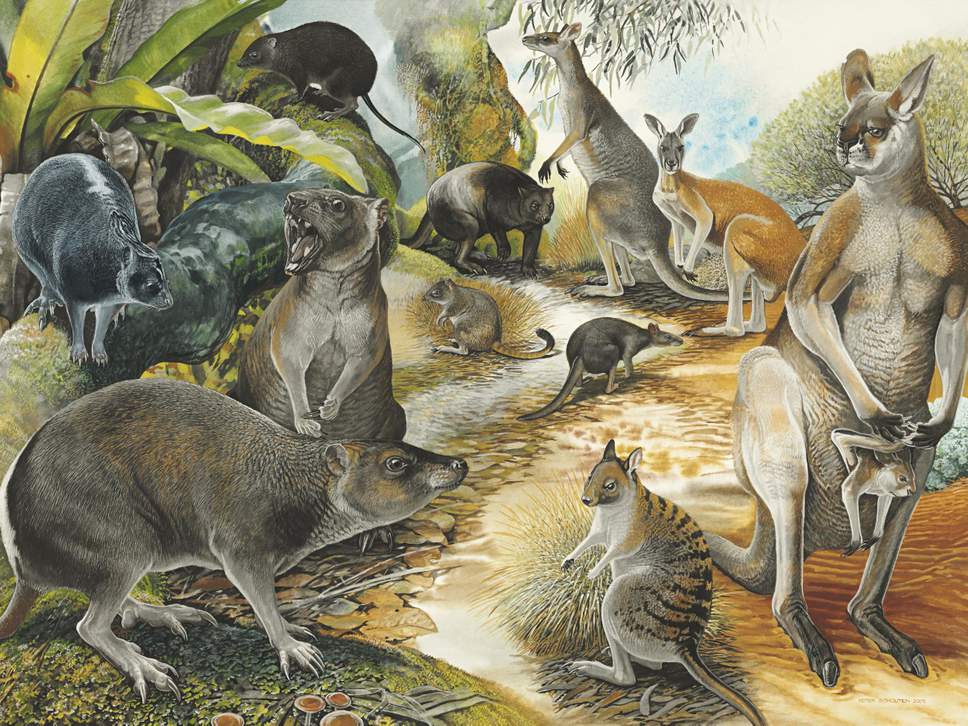@WFS,World Fossil Society,Riffin T Sajeev,Russel T Sajeev
Artistic reconstruction showing the balbarid kangaroo relative Nambaroo gillespieae (top left) ( Peter Shouten/Australian Geographic )Fossils unearthed in the Australian bush have provided new insights into how the kangaroo got its hop.
The 20-million-year-old remains belong to a long-extinct species of kangaroo relative that not only hopped but also bounded along on all fours as well as climbed.
Known as balbarids, these creatures reveal how the distinctive anatomy of these marsupials allowed them to conquer an entire continent.
“The long held idea is that the kangaroo hop evolved in response to climate change, with the spread of arid grasslands opening up new habitats that selected for high speed hopping gaits,” Dr Benjamin Kear, a palaeontologist at Uppsala University told The Independent.
While some other animals, including the hopping mouse, have adopted a similar gait, kangaroos have unique anatomy to facilitate this highly efficient mode of locomotion.
To find out if the same was true of balbarids, Dr Kear and his colleagues analysed the few bones they had unearthed belonging to one known as Nambaroo gillespieae, comparing them to different modern relatives that live in trees and on the plains.
Their results, published in the journal Royal Society Open Science, challenged the idea that kangaroos began hopping on Australia’s arid plains.
The scientists said these creatures appear to have evolved a versatile anatomy to scramble around their forest environment.
“The iconic kangaroo body plan is therefore extremely adaptable, and was probably a key to their success over the last 20 million years or more,” said Dr Kear.
It was not enough to save the balbarids, however, and the team think these creatures were probably driven to extinction as their forest homes shrunk.
“On the other hand, the ancestors of modern kangaroos used the same suite of locomotory morphologies to exploit newly emerging open habitats, and thus gave rise to one of the most successful mammal radiations on the Australian landmass today,” said Dr Kear.
Source: Article by Josh Gabbatiss,Science Correspondent,Independent.
@WFS,World Fossil Society,Riffin T Sajeev,Russel T Sajeev



 February 6th, 2019
February 6th, 2019  Riffin
Riffin 
 Posted in
Posted in  Tags:
Tags: 